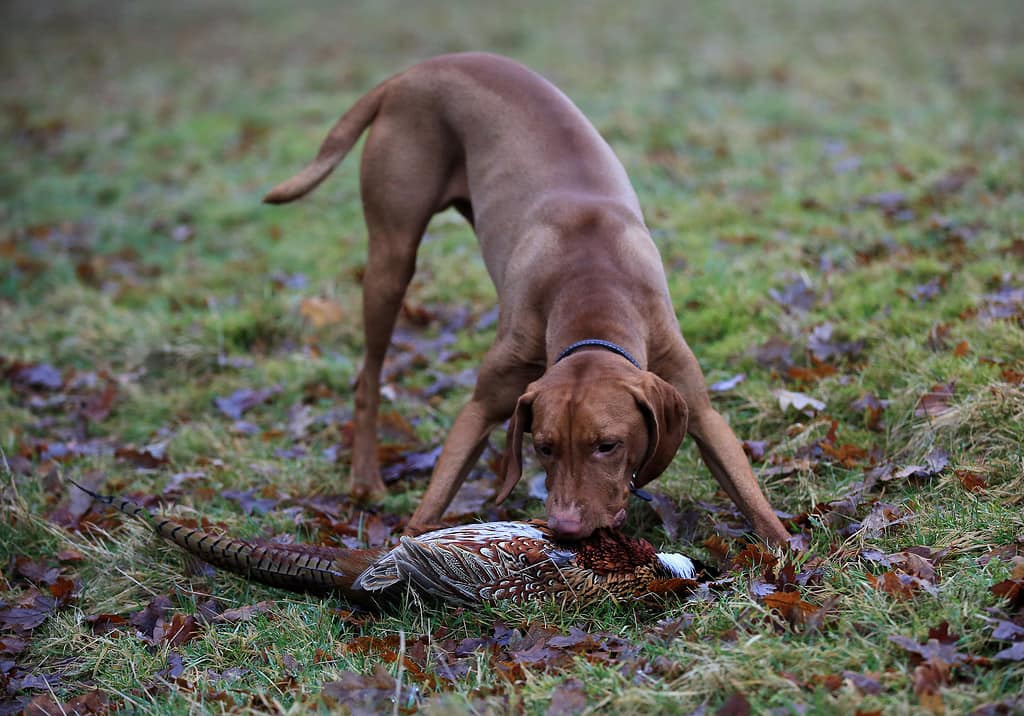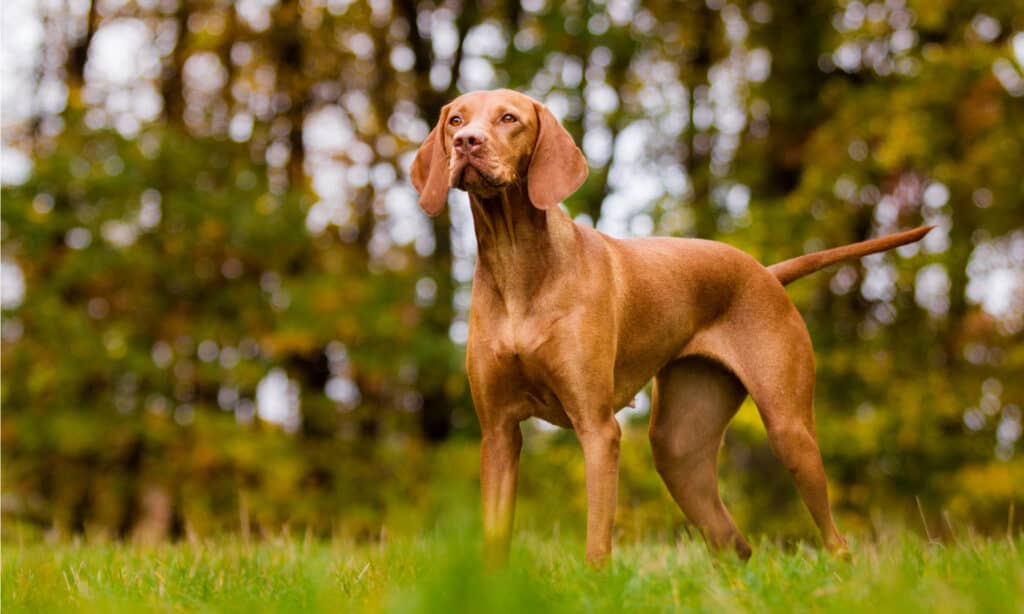Vizslas are not bred as companion dogs. Instead, they’re versatile gundogs. However, they can still make great family dogs for the right situation. They’re good-natured and tend to bond closely to their families. Despite their size, many of them think they’re lapdogs, in fact.
Beyond this, many reasons exist to consider this breed as your family dog. While they don’t work for every family, they can absolutely work well for some.
1. Very Active
These dogs were bred to be exceptional athletes. They’re sleek and well-muscled, allowing them to be in the field for much of the day. These dogs are often a bit much for the average family. Vizslas often need over an hour of moderate to vigorous exercise per day. A few walking laps around the block won’t cut it for these dogs.
However, if you have a very active family, Vizslas may be one of the few dogs to keep up with you. Marathon runners, backpackers, and similar hobbyists may find a true partner in this breed.
Vizslas can also work well for families that have tons of active children. They often work well with children when they are socialized with them from a young age. If there are several children for them to chase around, they can often meet their exercise needs without an issue (and all the children will have a companion to play with them).

Vizslas are versatile gundogs, but they’re surprisingly easy to train compared to similar breeds.
©The_Chickenwing/iStock via Getty Images
2. Easy to Train
Pointers are often not very trainable. However, Vizslas are surprisingly easy to train compared to other hunters. They’re intelligent and can easily learn tons of different cues. They can progress quickly into more advanced training, not just the basic stuff.
That said, these dogs are pretty distractable. They’re hunting dogs, through and through. Therefore, they tend to be excited by sounds and scents. When training, it can be hard to maintain their attention and help them learn anything.
We highly recommend training these dogs in many different situations. If you only train them in areas with few distractions, they won’t learn how to pay attention in places with sights and sounds. You have to teach them how to look past the distractions. For Vizslas, obedience is a skill that must be cultivated.
These dogs are naturally better for dog owners with a bit of experience. They require some training know-how that other dog breeds might not require. However, if you’ve trained dogs before, this breed can be a fun companion.
3. Gentle
Vizslas are renowned for being gentle and sensitive. They’re very emotionally reliant on their owners and responsive. Their emotional intelligence is pretty high. In other words, they can understand what the humans around them think and feel, allowing them to respond quickly.
These dogs can be pretty sensitive to reprimand, though. It’s very important that they are trained with positive reinforcement, as negativity can make them shut down.
Sensitivity can be a bad thing, though. If not properly socialized, these dogs may be a bit too sensitive. They often develop phobias around loud noises, for instance. You must introduce them to many situations and people at an early age. When this is done properly, they can make very gentle, responsive companions.
4. Polite

This breed tends to be naturally well-behaved, which is always a huge benefit.
©Aneta Jungerova/Shutterstock.com
Vizslas tend to be pretty well-behaved indoors, especially when raised indoors. Their sensitivity helps with this, of course. But they are also naturally polite. Once they get through their boisterous puppy years, these dogs are more and more capable of behaving well indoors.
These dogs tend to be very “bouncy” when young. Until they reach the age of two, they can romp around with great vigor if not exercised properly. This behavior can send things flying, including small children.
If you can put up with this for a couple of years, though, they can become very well-behaved adults.
5. Affectionate
Vizslas are renowned for being very physically affectionate. They love to cuddle and may even try to crawl into your lap despite their larger size. Many owners have dubbed them “velcro” dogs, as they always want to be touching their owners. Many will walk with their heads attached to their owner’s hips.
Simply put, these dogs are very touchy.
However, without proper companionship, these dogs can become a bit neurotic. They’re often hyperactive and destructive if they don’t get enough attention. These dogs can also be amazing chewers if they’re left to their own devices.
Therefore, these dogs are a great choice for those with plenty of time on their hands who also want an affectionate dog.
Ready to discover the top 10 cutest dog breeds in the entire world?
How about the fastest dogs, the largest dogs and those that are -- quite frankly -- just the kindest dogs on the planet? Each day, AZ Animals sends out lists just like this to our thousands of email subscribers. And the best part? It's FREE. Join today by entering your email below.
Thank you for reading! Have some feedback for us? Contact the AZ Animals editorial team.








